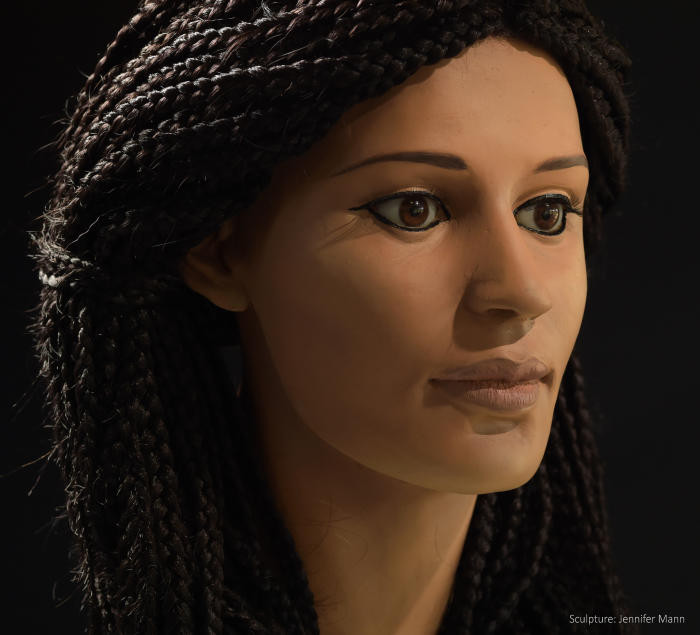Ancient Egyptian mummy's face reconstructed with 3D printing
The mummy, a woman called Meritamun, could have lived some 2000 years ago.
The face of an ancient female Egyptian mummy has been reconstructed with the help of 3D printing and forensic science techniques, an important step to better understand who she was. Other crucial details about her health have also been gathered, completing the picture.
This reconstruction was only made possible due to the work of a multi-disciplinary team led by scientists at Melbourne University, combining medical research, forensic science, computerised tomographic (CT) scanning, 3D printing, Egyptology and art.
It all started when Dr Ryan Jefferies, curator at the University's Harry Brookes Allen Museum of Anatomy and Pathology, stumbled across the skull of the mummy, which had been forgotten for decades. How it became a part of the Museum's collection remains a mystery.
Jefferies was concerned the remains could be decaying from the inside, but with no way to verify this first-hand, he ordered CT scans to be carried out.
The 2000-years-old mummy, a woman around the age of 25-years-old, was given the name of Meritamun – the "beloved of the god Amun". She underwent the scans at the Victorian Institute of Forensic Medicine, which revealed that the skull was still in extremely good condition.
The scientists then decided to go further, recognising that beyond the conservation value of the scans, there was a great forensic research opportunity. "The CT scan opened up a whole lot of questions and avenues of enquiry and we realised it was a great forensic and teaching opportunity in collaborative research,"Jefferies stated.
The researchers decided to combine different disciplines to see if they could learn more about Meritamun, and whether they could even get a glimpse of what she looked like alive.
Who was Meritamun?

The scientists initially gathered as much information as possible about the mummy. From the structure of the bones, Meritamun's gender was confirmed. She was in all probability a woman, as markers such as the smallness and angle of the jaw, the narrowness of the roof of her mouth, and the roundness of her eye sockets indicate.
The CT scans also revealed an interesting feature: she had important tooth decay. "We were able to see that Meritamun has abscesses all around the teeth and gum. This would have caused her a lot of pain and may have impacted her overall health", forensic Egyptologist Dr Janet Davey, from the Victorian Institute of Forensic Medicine, explained.
She also notes that the mummy's eyes sockets had been filled with artificial eyes, a common practice of ancient embalmers to make sure the person looked in death as closely as possible to what he or she looked like in life. One of the next steps of the research will now be to determine even more precisely when the mummy lived — the scientists will soon conduct radiocarbon dating of the bones to find out.
From a skull to a feminine face

But it is really the process of reconstructing the face which has been a novel experience for the scientists. After 140 hours of printing time on a simple consumer-level 3D printer, the complete skull was reproduced based on the information shown on CT scans. Then, sculptor Jennifer Mann was called in to use her forensic and artistic skills to reconstruct Meritamun's face.
Her method involved attaching plastic markers to the printed skull to indicate different tissue depths at key points on the face, based on averages in population data derived from modern Egyptians, and then applying clay.
Although the face may only be an approximation of what Meritamun looked like, the multidisciplinary method and the fact Mann has obtained good results in the past when reconstructing the faces of unidentified victims suggests we now have a good idea of the mummy's appearance in life. A feminine face, peering at us from History.
"By reconstructing her we are giving back some of her identity, and in return she has given this group of diverse researchers a wonderful opportunity to investigate and push the boundaries of knowledge and technology as far as we can go", Davey concluded.
© Copyright IBTimes 2025. All rights reserved.






















